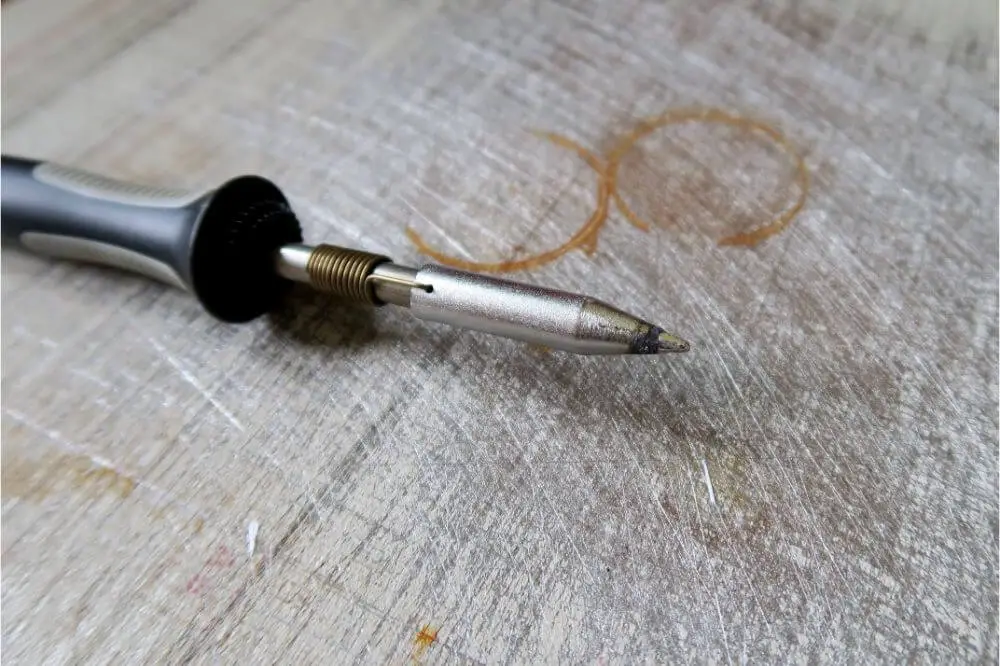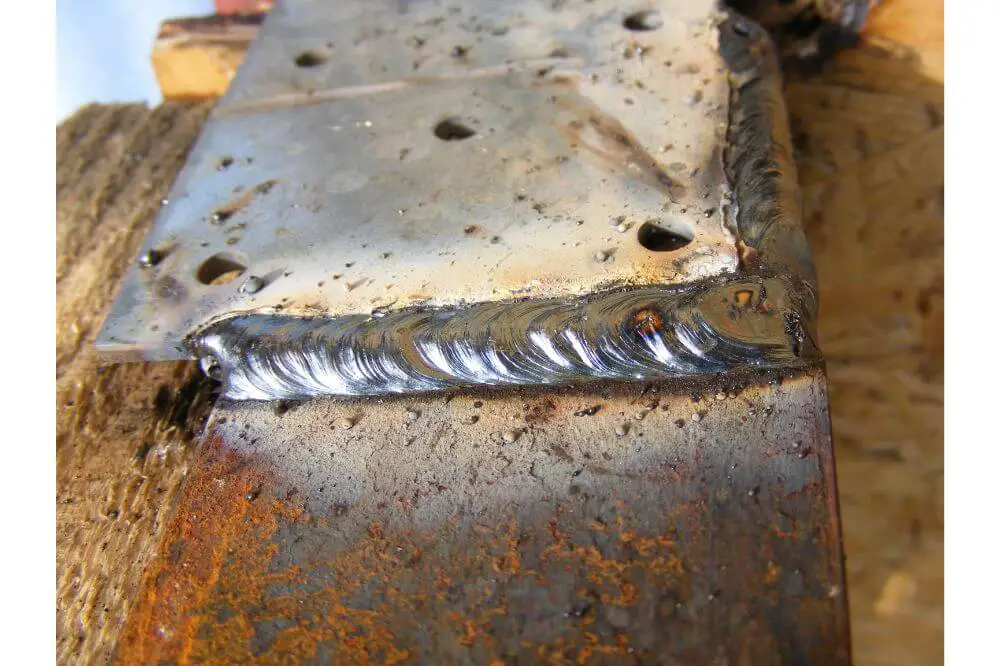There are different ways to join metal…
Depending on your job, you may run into all of these ways or just one of them. For electronics you may only encounter soldering which is an easy task to perform even for beginners.
But other work related duties may call for other joining different metals without solder and you may not have the space to use a welding torch or a blowtorch to get the job done. Using a soldering iron may be your only option.
To find out how to weld metal with a soldering iron, just continue to read our article. It has the information you need to do the job right.
The different metal joining techniques
As mentioned there are different techniques used to join different metals together. They all have their place and purpose and to understand how to do them, this table provides a simple explanation:
| # | Technique | Description |
|---|---|---|
| 1. | Hot gluing | This is a cheap, effective way to join two pieces of metal and it works like gluing paper, wood and plastic together. It is so easy a novice can do it |
| 2. | Soldering | This involves melting solder to make a connection between wires and components. It too is effective and very easy to do |
| 3. | Brazing | Similar to both soldering and welding, this technique requires metal to be melted and joining the two pieces together. Brazing does not need the metal surface to be melted to work |
| 4. | Riveting | This technique has heated metal bolts placed in drilled holes in heavy metals. The heat melts the metal together to form a strong bond. For lighter metals the rivets do not necessarily need to be heated |
| 5. | Nuts & bolts | A very common technique most people use without even thinking about it. It is used on just about everything except where welding, brazing and soldering are required |
| 6. | Welding | In this method, the surface of both metal pieces are melted at high temperatures and then the melted pieces are joined together to form an ultra strong bond |
The pros and cons of each technique
Each technique has its own set of positives and negative aspects. To help you evaluate which technique works for you, these pros and cons should provide you with a complete picture of those options.
#1. Hot gluing
Pros:
- Very simple to do and anyone can do this method
- It does the job quite well
Cons:
- The bond is quite weak
- The bond is not reliable
#2. Soldering
Pros:
- Safer than welding, hot gluing or brazening
- Needs only a low temperature to work
Cons:
- Not good for heavy duty connections
- Limited areas of use
#3. Brazing
Pros:
- Creates a strong bond like welding
- Can be used for many different applications
Cons:
- Soft filler metal
- Creates a weaker bond than welding
#4. Riveting
Pros:
- Can be done with or without heat
- Creates a strong bond
Cons:
- Leaves gaps between the metal pieces
- Not leak proof
#5. Nuts & Bolts
Pros:
- The most reliable method of joining metal pieces next to welding
- Doe not need special equipment to use
Cons:
- Not leak proof
- Possible to not tighten the nuts and bolts enough
#6. Welding
Pros:
- Forms the strongest bond possible
- It is a skill that needs to be mastered
Cons:
- Limited applications
- Not for every metal

How to Weld Metal With a Soldering Iron
Since welding requires you to melt the surface of two different metal pieces before joining them together,. using a soldering iron on heavy or thick metals is out of the question. The soldering iron or station just does not produce the heat required to accomplish that objective.
Instead, you will have to use thin pieces of metal with low melting points before you can weld with a soldering iron. To weld metal with a soldering iron, you have to wait till the iron gets hot enough and then apply the tip to the metal sections you want joined together.
Then you just move the soldering iron like you would a welding torch. Keep in mind that you would need a high wattage soldering iron to sustain the heat until you are done. Keep in mind that the tip can lose its heat very quickly once you touch it to the metal.
Soldering and brazing
If there are two techniques that are very similar, then it would be these two. Soldering is a lot like brazing as it can place a filler metal between two metal pieces,like brazing does, and weld the two pieces together.
To determine if you need to solder or braze the metal, you need to evaluate the project and see what type of joint is needed. Solder uses lower temperatures while creating a seamless bond. Brazing uses a higher temperature and the seam may still be seen.
Brazing may produce a tougher bond than soldering but it may be working with thicker metals than a soldering iron can. A soldering iron does have its limitations and should not be the first choice when solder cannot be used to make the connection.
Differences between soldering and welding
A soldering iron:
- Does not create as strong a bond as welding does
- Works at low temperatures limiting its use
- Can hide the seam while welding usually does not
- Cannot be used on all metals
- Cannot create a joint that is stronger than the base metal pieces
- Is better at brazing than it is at welding
Some final words
It may be a practical solution in some cases but welding with a soldering iron has too many factors to meet to be very efficient. While you can use a soldering iron to weld metal in some circumstances it is better to try one of the other techniques in order to get a strong bond.
Using a soldering iron is a good back up plan and when the space you are working in cannot accommodate larger pieces of equipment. Just make sure the metal you are working on has a low melting point and is easy to work with.

